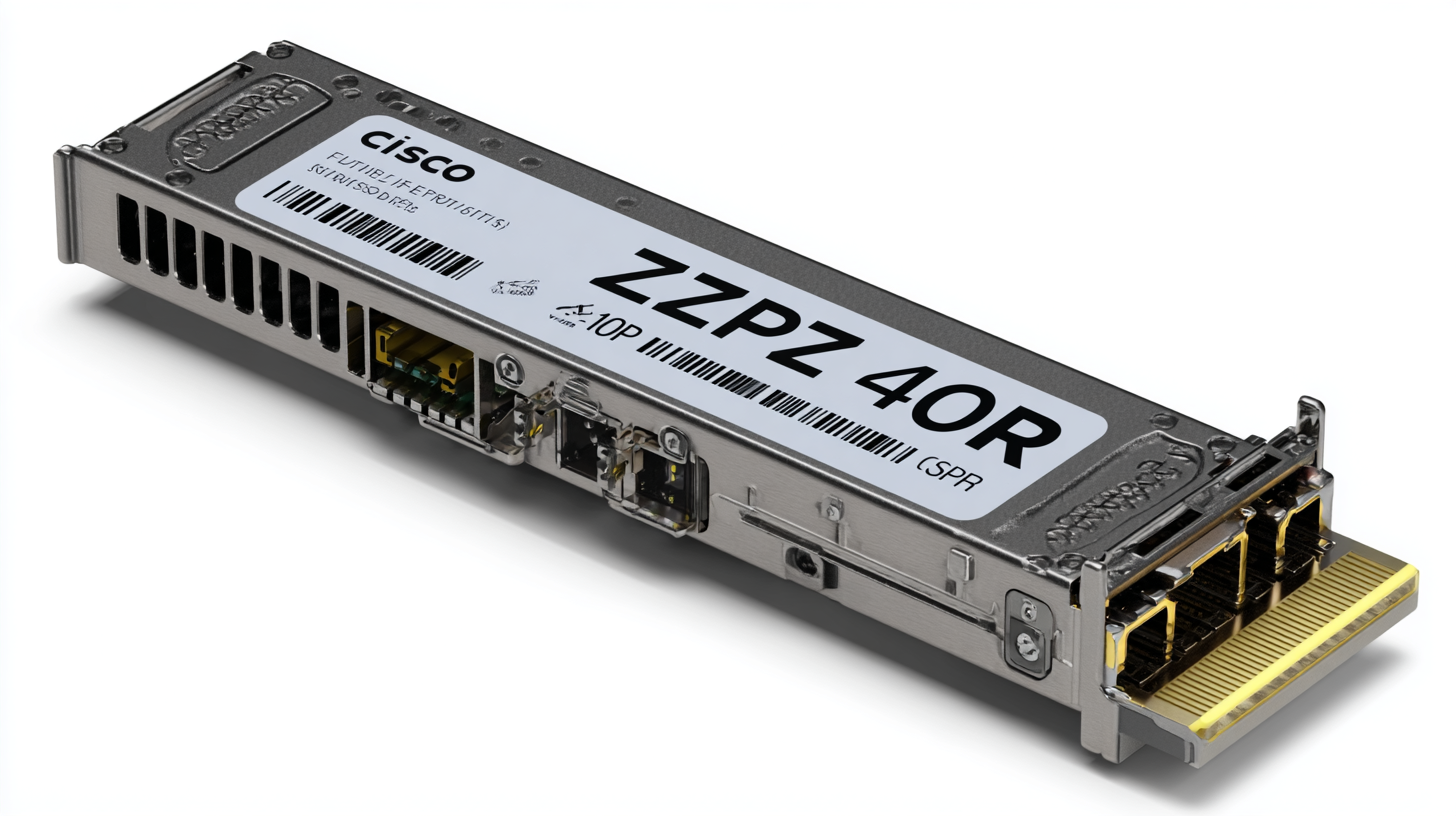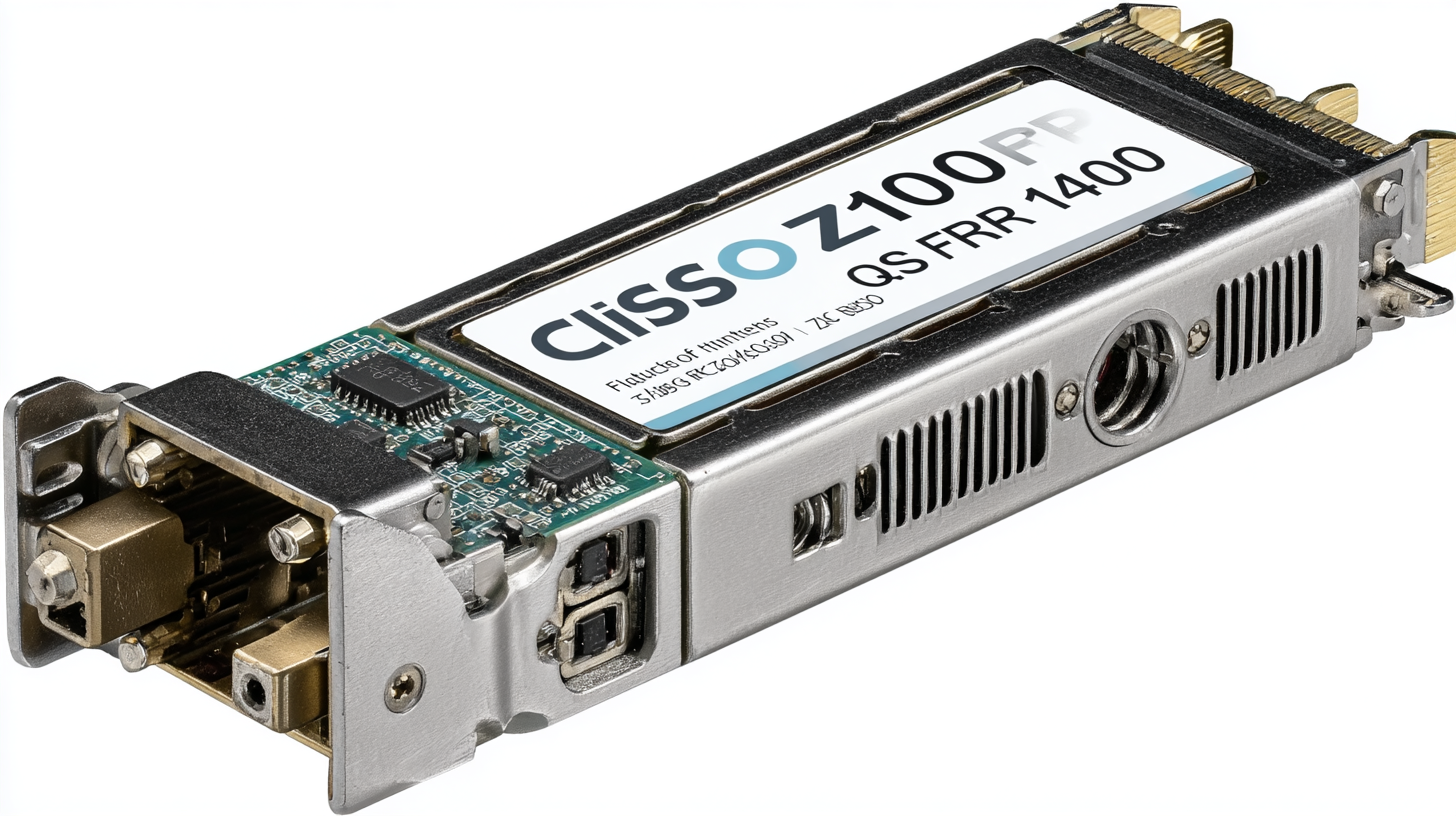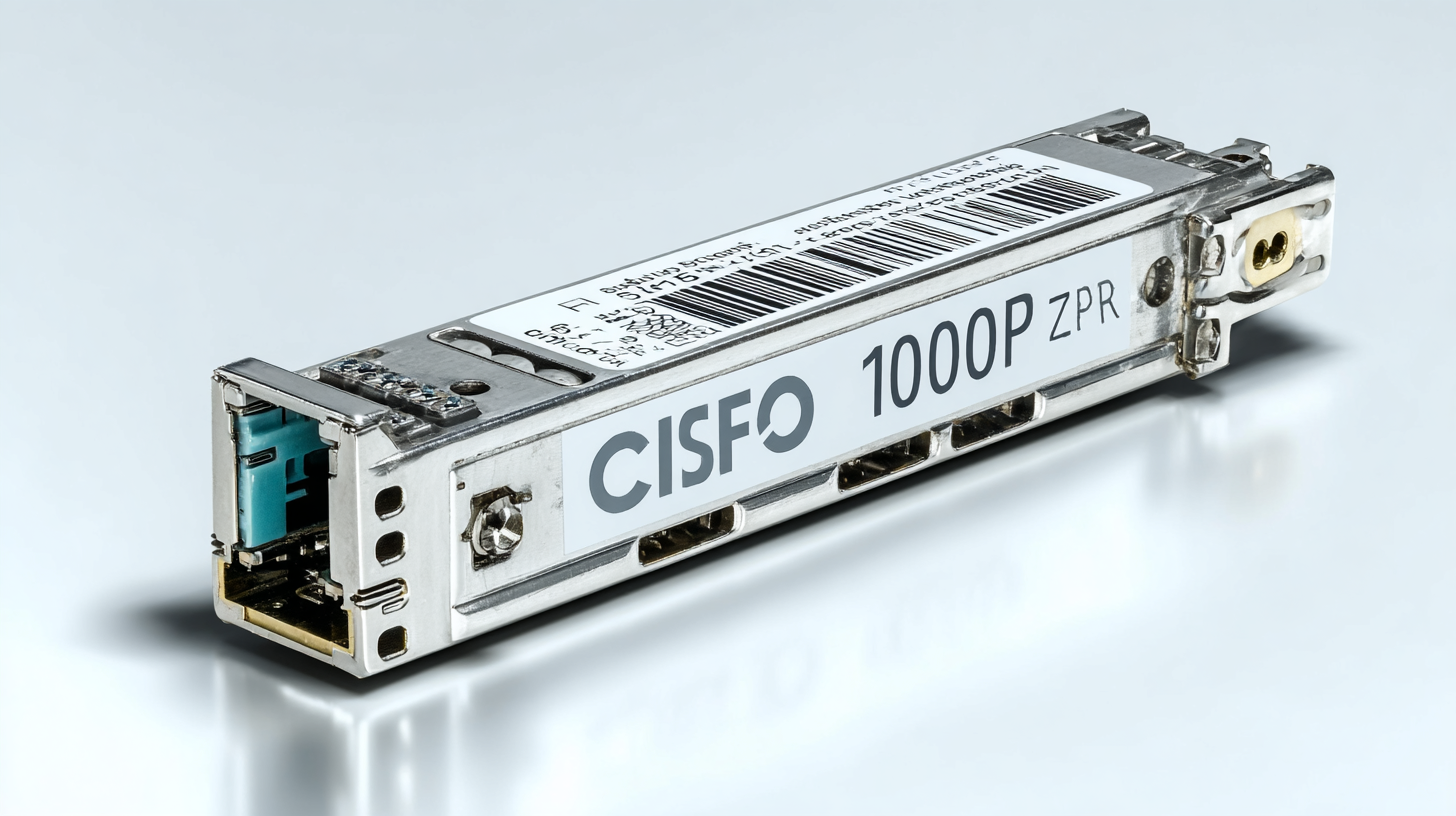Leave Your Message
In an era where data consumption is projected to increase exponentially, achieving seamless communication and connectivity has become paramount for businesses and network providers alike. A recent report by Cisco predicts that global internet traffic will reach a staggering 4.8 zettabytes per year by 2022, emphasizing the urgent need for robust high-speed networking solutions. Among the pivotal advancements is the introduction of the Cisco QSFP 100G ZR4 S, designed to support long-distance connections up to 80 kilometers with minimal signal degradation. By leveraging this state-of-the-art technology, organizations can not only enhance their network performance but also address the growing demand for bandwidth in data centers and enterprise environments. This blog will delve into the transformative impact of Cisco QSFP 100G ZR4 S solutions on the future of high-speed networking, exploring efficacy, deployment strategies, and potential industry applications.

The rapid evolution of high-speed networking is greatly influenced by the emerging role of 100G ZR4 S solutions, projected to dominate the market by 2025. The global Ethernet chip market is expected to grow from $3.43 billion in 2024 to $4.3 billion by 2033, demonstrating a stable compound annual growth rate (CAGR) of 2.6% during this forecast period. This growth is driven by the increasing demand for advanced networking technologies that can support the burgeoning data traffic driven by cloud computing, big data, and AI applications.
As the industry progresses, innovative technologies related to fiber optics will play a critical role in enhancing network performance. Companies are showcasing products like high-speed interconnect solutions capable of supporting greater distances and bandwidths. For instance, recent developments have introduced high-capacity optical modules that further expand the capabilities of 100G ZR4 S solutions, paving the way for more efficient data transmission.
**Tips:** When considering upgrades to networking infrastructure, it’s vital to assess your current data traffic needs and potential future demands. Investing in technologies that offer scalability and high performance can significantly enhance operational efficiency. Additionally, keeping up with industry standards and innovations will help ensure your network remains competitive and robust in the face of evolving demands.
| Category | Specification | Performance | Application | Market Trend by 2025 |
|---|---|---|---|---|
| Max Distance | 80 km | High throughput with minimal latency | Data Centers and WANs | Increased demand for high-capacity links |
| Power Consumption | < 3.5 W | Energy-efficient performance | Telecom Networks | Shift towards green technologies |
| Form Factor | QSFP28 | Compact and versatile | Enterprise Networking | Widespread adoption in corporate environments |
| Data Rate | 100 Gbps | Support for high-volume data | Cloud Services | Rapid growth driven by cloud adoption |
| Wavelength | 1530-1565 nm | Compatible with existing infrastructure | Fiber Optic Communications | Continued integration of optical technologies |
The advent of Cisco's QSFP 100G ZR4 S solutions marks an innovative leap in high-speed networking, offering unprecedented enhancements in data transmission rates and efficiency. This cutting-edge technology allows for the transfer of data at speeds up to 100 Gbps, making it a crucial development for businesses that rely on robust network performance. The QSFP (Quad Small Form-factor Pluggable) design facilitates high-density connectivity, optimizing limited space in data centers while ensuring high throughput.
Moreover, the integration of new optical technologies and advanced signal processing significantly reduces latency and enhances overall network reliability. Innovations in error correction and signal integrity mean that organizations can expect improved performance even in challenging environments. As enterprises increasingly migrate to cloud-based solutions and big data analytics, the role of such advancements in Cisco’s QSFP technology is essential. Businesses can leverage these high-speed connections not only to meet present demands but also to future-proof their infrastructure against the ever-growing data traffic and bandwidth requirements.
The landscape of high-speed networking is experiencing unprecedented growth as businesses and consumers demand faster data transmission rates and enhanced connectivity. The accelerated shift towards digital transformation and the increasing reliance on cloud services have catalyzed this expansion. Organizations are now seeking robust solutions that can handle vast amounts of data traffic, making technologies like the Cisco QSFP 100G ZR4 S vital for meeting these evolving demands. With its ability to transmit data over long distances with minimal loss, this solution exemplifies the advancements necessary for modern networking needs.

Looking ahead, market projections indicate a continued upward trajectory for high-speed networking solutions. The proliferation of IoT devices, coupled with the rise of 5G networks, is expected to further drive demand for high-performance connectivity.
Industries such as healthcare, finance, and education will increasingly rely on high-speed networks to streamline operations and improve service delivery. As such, companies must adapt to these trends by investing in cutting-edge solutions and infrastructure that can support future growth, ensuring they remain competitive in an ever-evolving digital landscape.
As the demand for faster and more reliable internet connectivity continues to surge, the comparison between Cisco's QSFP 100G ZR4 S solutions and traditional networking options has become increasingly pertinent. The shift from 10G to 100G networks marks a pivotal transition for service providers and network operators, who are now seeking to enhance their infrastructure to support higher bandwidth over longer distances.
One of the standout features of the QSFP 100G ZR4 S optical modules is their ability to support 80km links, enabling operators to maintain high-speed connectivity across vast networks. This is a significant improvement over traditional solutions, which often struggle to deliver the same level of performance at extended ranges. With the accelerated pace of network upgrades, utilizing advanced optical modules not only optimizes data transmission but also enhances the overall efficiency and scalability of network operations. Investing in next-gen technology like the QSFP 100G ZR4 S makes strategic sense for operators aiming to stay competitive in an evolving digital landscape.

As businesses increasingly require higher bandwidth to support data-intensive applications, the shift towards 100G networking has become imperative. According to a report by MarketsandMarkets, the global 100G optical transceiver market is projected to reach $6 billion by 2025, growing at a CAGR of 20% from 2020. This growth is fueled by the demand for faster internet services, cloud computing, and the expansion of big data analytics within organizations. Businesses must adapt to these changing demands to remain competitive, leveraging advanced networking technologies like Cisco’s QSFP 100G ZR4 solutions to enhance their infrastructure.
Additionally, a study from International Data Corporation (IDC) indicates that organizations are projected to spend over $1.5 trillion on digital transformation by 2022. As a fundamental component of this transformation, high-speed networking enables seamless communication and data transfer across platforms. The adoption of 100G technology not only improves operational efficiency but also prepares businesses for future innovations in artificial intelligence and machine learning. By investing in robust 100G networking solutions, companies can ensure they are equipped to meet the evolving needs of the digital landscape.
